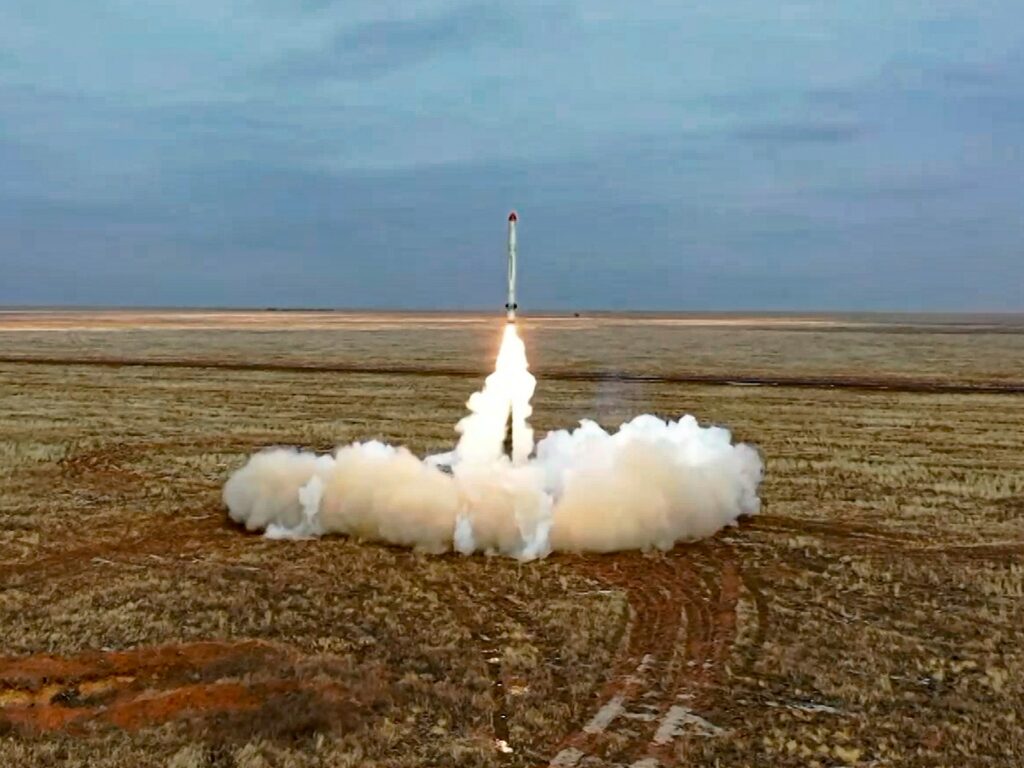Russia has announced that it will be conducting military drills that will include practice for the use of tactical nuclear weapons. This announcement comes after top European leaders expressed increased military support for Ukraine. The decision to hold these drills was made in response to statements made by Western and NATO-member countries regarding the potential deployment of troops to Ukraine, a country that Russia invaded over two years ago.
The Ministry of Defence stated that the drills will involve the preparation and deployment of nonstrategic nuclear weapons in order to enhance readiness to carry out combat tasks. The exercises will include missile formations in the Southern Military District and naval forces, and are scheduled to take place in the near future. While Russia’s strategic nuclear forces regularly conduct exercises, this marks the first public announcement of drills involving tactical nuclear weapons, which are typically smaller in yield than strategic nuclear weapons.
Tensions have been escalating since French President Emmanuel Macron and UK Foreign Secretary David Cameron made statements about potential military intervention in Ukraine. Russian officials have condemned these statements and warned of a dangerous escalation trend. Moscow has long warned that conflict with NATO would become inevitable if European members of the military alliance intervened in Ukraine.
The relationship between Western countries, led by the United States, and Russia deteriorated after Russian forces invaded Ukraine in 2022. Russia and the US are the world’s largest nuclear powers, holding the majority of the world’s nuclear warheads. China, France, and the United Kingdom also possess significant nuclear arsenals.
Tactical nuclear weapons are distinguished by their size, range, and use for limited targets. They are designed to accomplish more immediate military goals and are typically smaller in size than strategic weapons. These weapons can be mounted on missiles, airdropped bombs, or artillery shells with a relatively short range. The explosive power of a tactical weapon can vary, with modern warheads allowing operators to adjust the yield. Tactical weapons can range from a fraction of a kiloton to 50kt in strength, with a single kiloton being equivalent to 1,000 tonnes of TNT.
#Russia #announces #nuclear #weapon #drills #provocative #Western #threats
Given the recent announcement by Russia regarding nuclear weapon drills and the escalating tensions between Russia and Western countries, it is crucial to consider the long-term implications and potential future developments of this situation.
The decision by Russia to hold drills involving the use of tactical nuclear weapons is a significant escalation of tensions in the region. This move comes in response to statements by European leaders indicating stronger military support for Ukraine, including the possibility of sending ground troops. The use of tactical nuclear weapons in military exercises raises concerns about the potential for a further escalation of conflict and the increased risk of nuclear proliferation.
The threat of nuclear war is a grave concern that must be taken seriously by all parties involved. The use of tactical nuclear weapons in military drills underscores the need for diplomacy and dialogue to prevent the situation from spiraling out of control. It is essential for all countries to engage in constructive dialogue and work towards finding peaceful solutions to the ongoing conflicts in the region.
In light of these developments, actionable advice would be to urge all parties to exercise restraint and prioritize diplomatic efforts to de-escalate tensions. It is crucial for international organizations, such as the United Nations, to play a proactive role in facilitating negotiations and finding peaceful resolutions to the conflicts in Ukraine.
Additionally, it is important for countries to reaffirm their commitment to non-proliferation of nuclear weapons and to work towards reducing the risk of nuclear conflict. This includes promoting transparency and confidence-building measures to prevent misunderstandings and miscalculations that could lead to a catastrophic outcome.
Ultimately, the current situation underscores the importance of international cooperation and diplomacy in addressing global security challenges. It is imperative for all countries to work together towards promoting peace, stability, and security in the region and beyond.

